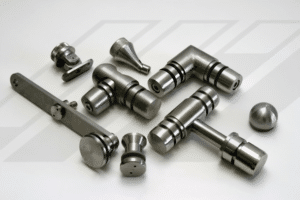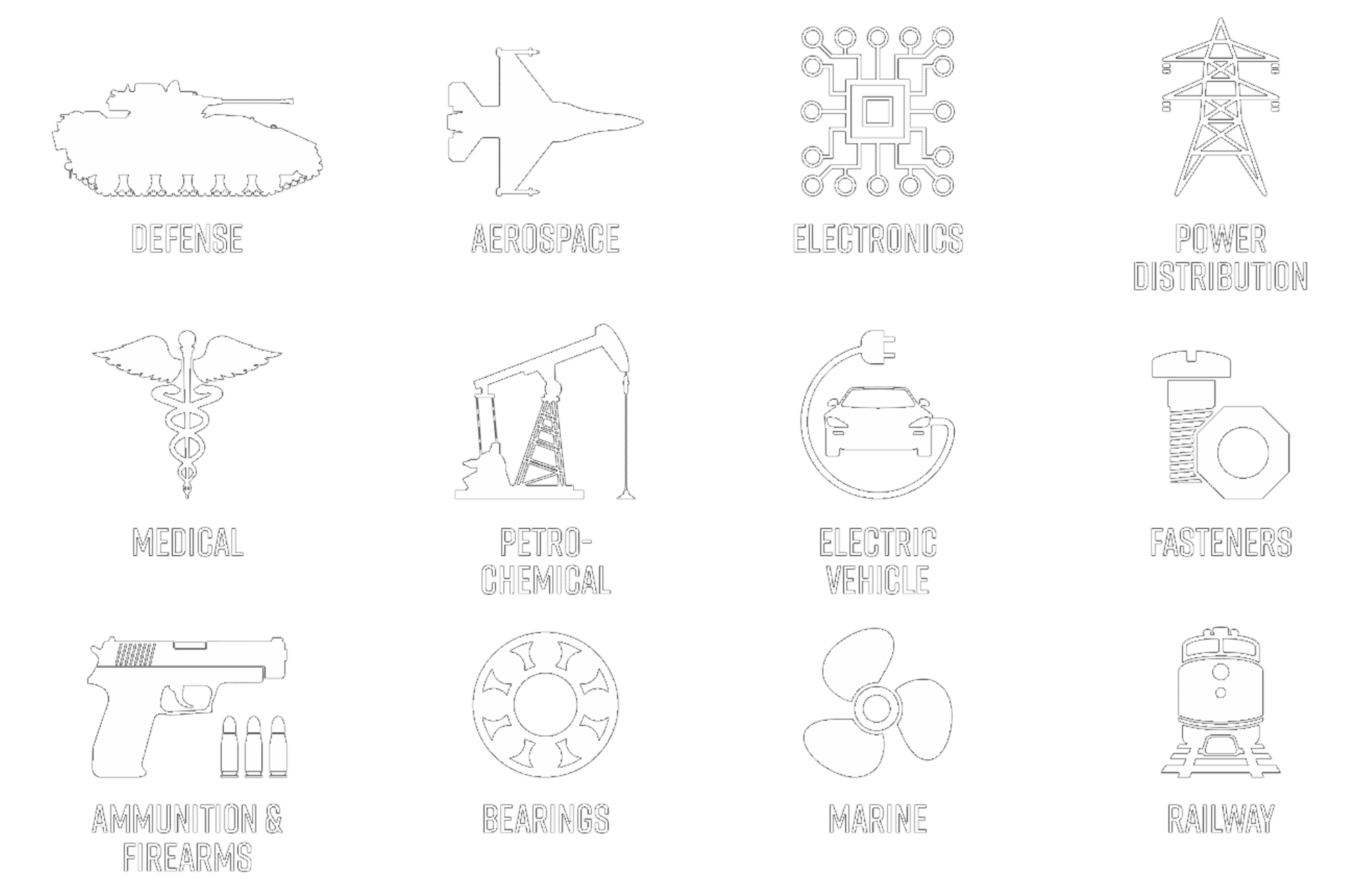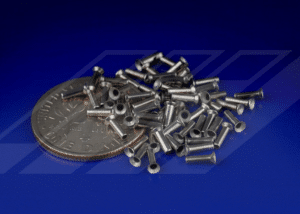
Advanced Plating Technologies provides passivation of titanium and other medical alloys to the demanding requirements of ISO 13485:2016 for medical device manufacturers. APT can provide Installation Qualification (IQ), Operation Qualification (OQ) and Performance Qualification (PQ) validation of passivation of titanium and medical alloys to ensure specification compliance and consistency in processing.
A brief summary of IQ, OQ and PQ validation for passivation of titanium and medical-grade alloys is provided below:
Installation Qualification (IQ): Provide objective evidence that the equipment used in the process adheres to the manufacturer’s specifications and that the recommendations of manufacturer are considered in the installation. In other words – is the equipment installed properly within the facility?
Operation Qualification (OQ): Provide objective evidence that the process control limits and action limits will result in a finished product that meets design requirements. In other words – will the finishing process be maintained within limits that will produce parts that meet specification?
Performance Qualification (PQ): Provide objective evidence that the process will consistently produce a product that meets design requirements under anticipated operational conditions. In other words – is production quality achieved with multiple production runs and various production operators?
Passivation of Titanium – Why APT Precision Passivation?

The precision passivation of titanium or other medical alloys begins with cleaning. Medical grade ultrasonic cleaners suited for the specific alloy are made for each order. Parts are ultrasonic cleaned to couple both sonic, thermal and chemical cleaning of the parts. The passivation solution for titanium or medical alloy components is tailored to each alloy as specified by customer or ASTM specification. After passivation, the parts are neutralized and rinsed in a multi-stage hot deionized ultrasonic water rinsing system with the final rinse measured to 20 MW-cm for the highest quality rinse. After rinsing, parts are dried in a dedicated, stainless steel oven to ensure complete evaporation of residual water.
The inspection of medical components involves visual inspection in a controlled environment under stereoscopes at 10x magnification or higher as well as standard inspections for passivation including copper sulfate, water immersion, high humidity and salt spray inspection. With most customers a customized inspection protocol is agreed upon as part of the part validation process.
Passivation of Titanium and Medical Alloys – Specifications
The most common specification used in passivation of titanium and medical components is ASTM F86, ASTM A380 and ASTM A967. A brief summary of these specifications is provided below:
Passivation of Titanium and Medical Alloys to ASTM F86
Cleaning
Organic solvent degreasing for the removal of gross oils and greases
Hot alkaline soak cleaning as recommended
Hot alkaline electrocleaning as recommended
Ultrasonic cleaning as recommended
Acidic cleaning can be utilized but must be neutralized prior to passivation step
Passivation
20-45v% Nitric Acid (specific gravity 1.1197 to 1.285) at room temperature for 30 Mins minimum. For accelerated process a 20-25v% acid solution heated at 120-140F may be used for a minimum of 20 Mins (cross-reference to ASTM A967 and ASTM A380)
Neutralization
Employ a neutralizing procedure for product designs where acidic liquid could be trapped (e.g. small blind holes).
Rinsing and Drying
A thorough water rinsing process and drying process are essential. Specific methods are left to the cognizant engineering organization.
Passivation of Titanium and Medical Alloys to ASTM A967
Five nitric and citric methods are listed as follows:
Nitric 1: 20-25 v% Nitric Acid, 2.5 w% Sodium Dichromate, 120-130F, 20 Mins minimum
Nitric 2: 20-45 v% Nitric Acid, 70-90F, 30 Mins minimum
Nitric 3: 20-25 v% Nitric Acid, 120-140F, 20 Mins minimum
Nitric 4: 45-55 v% Nitric Acid, 120-130F, 30 Mins minimum
Nitric 5: Other combinations of temperature, time, and acid with or without accelerants, inhibitors or proprietary solutions capable of producing parts that pass the specified test requirements.
Citric 1: 4-10 w% Citric Acid, 140-160F, 4 Mins minimum
Citric 2: 4-10 w% Citric Acid, 120-140F, 10 Mins minimum
Citric 3: 4-10 w% Citric Acid, 70-120F, 20 Mins minimum
Citric 4: Other combinations of temperature time and concentration of citric acid with or without chemicals to enhance cleaning, accelerants or inhibitors capable of producing parts that pass the specified test requirements.
Citric 5: Other combinations of temperature time and concentration of citric acid with or without chemicals to enhance cleaning, accelerants or inhibitors capable of producing parts that pass the specified test requirements. Immersion bath to be controlled at pH of 1.8-2.2
Five testing methods to validate passivation services are provided as follows:
Practice A – Water Immersion Test
Practice B – High Humidity Test
Practice C – Salt Spray Test
Practice D – Copper Sulfate Test
Practice E – Potassium Ferricyanide-Nitric Acid Test
A table of recommended nitric acid passivation methods is provided in the Appendix that correlates Nitric 1 through 5 methods to the specific stainless steel alloy grade. No such reference is provided in the specification for Citric 1 through 5 methods.
Passivation of Titanium and Medical Alloys to ASTM A380

ASTM A380 is unique in that it references the appearance of the component in the recommended callout for the passivation process. A brief summary of the passivation methods per ASTM A380 are listed below:
Code F
Material: 200 and 300 Series, 400 Series, precipitation hardening and maraging alloys containing Cr 16% or more (except free machining alloys).
Condition: Dull or nonreflective finish
Method: 20-50v% nitric, 120-160F 10-30 Mins or 70-100F for 30-40 Mins
Code G
Material: 200 and 300 Series, 400 Series, precipitation hardening and maraging alloys containing Cr 16% or more (except free machining alloys).
Condition: Bright machined or polished surfaces
Method: 20-40v% nitric, 2-6w% sodium dichromate, 120-155F 10-30 Mins or 70-100F for 30-60 Mins
Code H
Material: 400 series maraging and precipitation-hardening alloys containing less than 16% chrome or high-carbon-straight chrome alloys (except free machining alloys)
Condition: Dull or nonreflective finish
Method: 20-50v% nitric, 110-130F, 20-30 Mins or 70-100F, 60 Mins
Code I
Material: 400 series maraging and precipitation-hardening alloys containing less than 16% chrome or high-carbon-straight chrome alloys (except free machining alloys)
Condition: Bright or polished surfaces
Method: 20-25v% nitric, 2-6w% sodium dichromate, 120-130F, 15-30 Mins or 70-100F, 30- 60 Mins
Code J
Material: 200, 300 and 400 series free-machining alloys
Condition: Bright or polished surfaces
Method: 20-50v% nitric, 2-6w% sodium dichromate, 70-120F, 25-40 Mins
Code K
Material: 200, 300 and 400 series free-machining alloys
Condition: Bright or polished surfaces
Method: 1-2v% nitric, 1-5w% sodium dichromate, 120-140F, 10 Mins
Code L
Material: 200, 300 and 400 series free-machining alloys
Condition: Bright or polished surfaces
Method: 12v% nitric, 4w% copper sulfate, 120-140F, 10 Mins
Code M
Material: Special free-machining 400 Series alloys with more than Mn 1.25% or more than S 0.40%
Condition: Bright or polished surfaces
Method: 40-60v% nitric, 2-6w% sodium dichromate, 120-160F, 20-30 Mins








